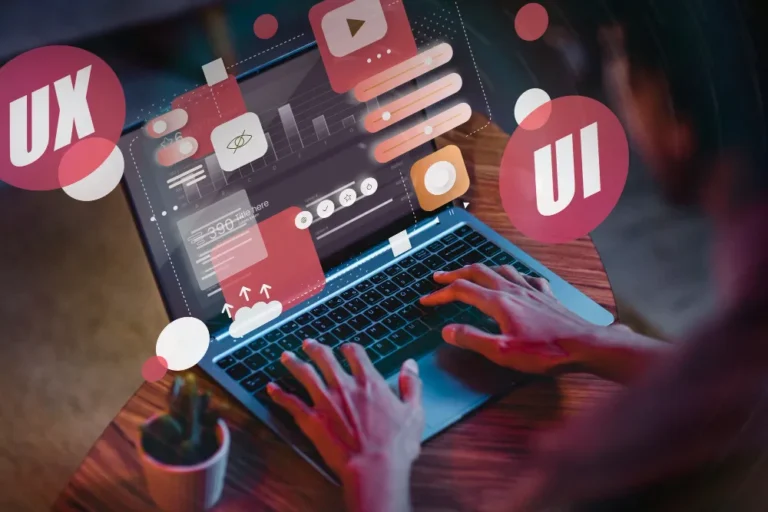When it comes to creating a website, a question often comes to mind! should I focus on great design or something that will bring business results? I say, the question is important and if you ask it at the right time, you can avoid many mistakes in the future. In this blog, I have tried to explain the matter very simply, so that you can make the right decision for yourself.
Table of Contents:
- Why everyone thinks of design first
- What is conversion and why is it important
- Design vs. Conversion – The Key Difference
- Real-life examples – Two business stories
- How to create balance
- Some features of conversion-focused design
- What to think about before starting
- Conclusion – The decision is yours, the responsibility too
Why everyone thinks of design first
When most businessmen or founders think of a website, the first thing that comes to mind is, will it look good, what will the colors be like, will the animation work, etc. This is natural. Because a customer also judges by sight first. Think for yourself, if a clothing store catches your eye with colorful lights and beautiful displays, will you be interested? Of course you will. In the same way, the design creates the first impression of the website.
But the problem arises when we think that just looking good will do. A gift item seller first spent a lot of money to build a website. But in the next two months, orders are very low. Because the site had a good design, but it was difficult to find products, ordering was complicated, and there was no call to action button anywhere. Then the business is far from making a profit, it has to count losses.
What is conversion and why is it important
Conversion means something that you want the visitor to do on your website. It can be shopping, filling out a form, calling or booking. You are building a website for a specific purpose – if that is not fulfilled, then no matter how good your design is, there is no profit.
Suppose a home service provider (such as AC repair) builds a website. They want people to call and book a service. But there is no mobile number anywhere on the website, the booking form takes time to open. As a result, the customer who came to get the work, left. Not only did they lose a lead, they lost a potential long-term client. If you don’t understand conversion, design is just a decorated house, without a door lock.
Design vs. Conversion! The Key Difference
Design shows, drives conversion. Design helps you attract attention, and conversion helps the customer take action. If you just stick to nice fonts, animations and colors, then maybe some people will come to your site but they won’t stay. It won’t work.
Conversion means showing the customer the path you want them to take. For example, if you are a coach and want people to book a consultation, then the site will have a consultation button, a simple form, and a reminder message. Without these, people will look at it and leave. And you will think that no one is interested.
Real-life examples – a story of two businesses
A handmade candle seller thought design was everything. He used custom animations, model shoot photos, and colorful backgrounds on his website. But customers couldn’t find ‘Buy Now’ anywhere when they entered. They were shown the product on the second page. As a result, many people were not able to order despite their interest.
On the other hand, a local coffee shop owner created a very simple website that only had offers, location, timing, and an order button. Customers could easily find out when the store was open, what offers were running, and how to order. As a result, the business became successful at a low cost. Here, the design was simple, but the conversion was goal-oriented.
How to create a balance
There is a balance between design and conversion. You need to create a design that is pleasing to the eye, but also have a structure that makes it easy for people to understand what they should do. The headline should be clear, the buttons should be eye-catching, and the important information should be right up front.
If a flower studio wants to promote their workshop, they should put a big headline on the website first – “20% off this week – book now”. There will be a form at the bottom, images on the side. The design is beautiful, the content is clear, and the conversion is clearly guided. This is the right balance.
Some characteristics of conversion-focused design
- Clear and small headlines
- Buttons that are noticeable and easy to click
- Navigation is easy even when visiting on mobile
- Content is organized and divided according to points
- Pre-answering visitors’ questions
These are not separate designs, but rather incorporating conversion thinking into your design. If a furniture store gives visitors the product range, price, and contact method right up front, the chances of a sale will increase. And that’s the essence of conversion-focused design.
What should you think about before you start
What is the purpose of your website? Do you want people to come to your site just to look, or to do something? If your business needs a return, it’s not just eye-catching colors, it needs content and structure that encourages people to take action.
Before making every design decision, think twice – what will the customer do with it? Is that easy to do? If the answer is no, then it will just be a show-piece. It will not bring profit to the business.
Conclusion – The decision is yours, the responsibility is yours
Design or conversion! There is no single answer to this question. But if you are after business results like me, then there is no choice but to focus on conversion. Design


